| August 03, 2007 |  |
our time will build eternity |
| Previous Issues | Aug 02 | Aug 01 | Jul 31 | Jul 30 | Jul 27 |
Researchers Produce Images Of Gases Escaping From Io Boston MA (SPX) Jul 29, 2007
Boston MA (SPX) Jul 29, 2007Boston University (BU) researchers published today the first clear evidence of how gases from Jupiter's tiny moon's volcanoes can lead to the largest visible gas cloud in the solar system. Jupiter, the largest planet in the solar system, has a moon named Io that is just 100 km larger in radius than Earth's Moon. According to lead researcher Michael Mendillo, professor of electrical and computer ... more NASA Announces Next Undersea Exploration Mission Dates And Crew  Silver Spring MD (SPX) Jul 25, 2007
Silver Spring MD (SPX) Jul 25, 2007NASA will send three astronauts and a Constellation Program aerospace engineer into the ocean depths off the Florida coast from Aug. 6 to 15. They will test lunar exploration concepts and a suite of medical objectives for long-duration spaceflight. NASA veteran space flyer and aquanaut Nicholas Patrick will lead the 10-day undersea mission aboard the National Oceanic and Atmospheric Administrati ... more Digging Deep For Martian Life  Moffett Field CA (ARC) Jul 24, 2007
Moffett Field CA (ARC) Jul 24, 2007The European Space Agency (ESA), like NASA, has a plan to explore the solar system. ESA's Aurora Programme includes orbiters, landers, rovers, and ultimately, human exploration of the moon and Mars. ExoMars, a rover scheduled to launch in 2011 and to land on Mars in 2013, is one of Aurora's flagship missions. The ExoMars rover will be capable, for the first time since NASA's Viking missions in ... more Throttling Back To The Moon  Huntsville AL (SPX) Jul 24, 2007
Huntsville AL (SPX) Jul 24, 2007Accelerating from 0 to 60 then slowing down for a stop light is no problem for an ordinary automobile. But if you were piloting a rocketship, it wouldn't be so easy. Most rocket engines are designed to burn full-on (liftoff!) or full-off (coasting through space) with no in-between. And that can be a problem--namely, how do you land this thing? Throttling is crucial for a planetary lander. ... more Researchers Produce Images Of Gases Escaping From Jupiter Moon Io  Boston MA (SPX) Jul 21, 2007
Boston MA (SPX) Jul 21, 2007Boston University researchers have published the first clear evidence of how gases from Jupiter's tiny moon's volcanoes can lead to the largest visible gas cloud in the solar system. Jupiter, the largest planet in the solar system, has a moon named Io that is just 100 km larger in radius than Earth's Moon. According to lead researcher Michael Mendillo, professor of electrical and computer engine ... more |
cassini
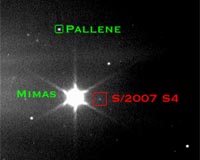 bruce-moomaw 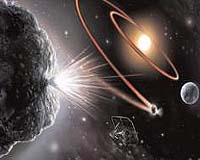 mars-robot 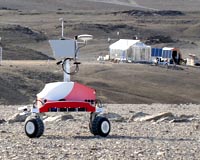 |
 Canoga Park CA (SPX) Jul 20, 2007
Canoga Park CA (SPX) Jul 20, 2007Pratt and Whitney Rocketdyne (PWR) was awarded a NASA contract valued at $1.2 billion to design, development and test a J-2X engine that will power the upper stages of the Ares I and Ares V launch vehicles. "We are very proud to have been selected by NASA to power the return of U.S. astronauts to the moon and beyond," said Stephen Finger, president, Pratt and Whitney. "This contract award is ano ... more Saturn Turns 60  London UK (SPX) Jul 20, 2007
London UK (SPX) Jul 20, 2007"We detected the 60th moon orbiting Saturn using the Cassini spacecraft's powerful wide-angle camera," said Carl Murray, a Cassini imaging team scientist from Queen Mary, University of London. "I was looking at images of the region near the Saturnian moons Methone and Pallene and something caught my eye." The newly discovered moon first appeared as a very faint dot in a series of images Cassini ... more Hidden Lake Could Be Key To Helping Darfur  London (UPI) Jul 20, 2007
London (UPI) Jul 20, 2007A huge lake hidden beneath Darfur and detected by radar from space could be the key to saving lives in the arid, war-torn region. Plans are under way to dig 1,000 wells that could provide water and help stop the region's war, The Telegraph reported Thursday. A team led by a veteran of NASA's Apollo lunar exploration program used satellite equipment to compose a picture of the 12,000-square-mile ... more Saturn Moon Iapetus Retains Its Youthful Figure  Pasadena CA (SPX) Jul 18, 2007
Pasadena CA (SPX) Jul 18, 2007Saturn's distinctive moon Iapetus is cryogenically frozen in the equivalent of its teenage years. The moon has retained the youthful figure and bulging waistline it sported more than three billion years ago, scientists report. "Iapetus spun fast, froze young, and left behind a body with lasting curves," said Julie Castillo, Cassini scientist at NASA's Jet Propulsion Laboratory, Pasadena, Calif. ... more |
lunar
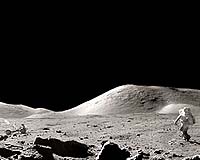 rocketscience 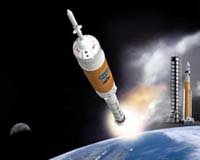 rocketscience 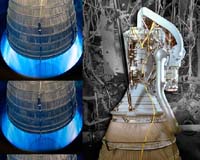 |
 Huntsville AL (SPX) Jul 10, 2007
Huntsville AL (SPX) Jul 10, 2007NASA's next moon rocket is still on the drawing board, but already scientists are dreaming up big new things to do with it. "The Ares V rocket will be able to launch missions whose volume or mass or both can be handled no other way," says Philip Stahl, an internationally respected optical engineer now at NASA's Marshall Space Flight Center. Maybe, he says, we should use it "to launch big space ... more Northrop Grumman Helps NASA Shape Plans For Affordable Lunar Lander  El Segundo CA (SPX) Jul 10, 2007
El Segundo CA (SPX) Jul 10, 2007The lunar lander that will carry NASA astronauts to the moon's surface by the end of the next decade will benefit from more than 50 years of technological change -- and more than 50 years of unique engineering and operational experience from Northrop Grumman Corporation, the designer and producer of the original Apollo Lunar Module. Since late 2006, the company has hosted a series of techn ... more Cassini Scientists Wring Out The Details On Spongy Hyperion  Boulder CO (SPX) Jul 10, 2007
Boulder CO (SPX) Jul 10, 2007Scientists on NASA's Cassini mission to Saturn now have a better understanding of why the odd moon Hyperion has such an unusual appearance. The crucial factor in creating the strange, sponge-like appearance of Hyperion appears to be its extremely low density, say Cassini scientists in a research paper being published in the July 5 issue of the journal Nature. The researchers examined Cassini sp ... more Summer Moon Illusion  Huntsville AL (SPX) Jun 29, 2007
Huntsville AL (SPX) Jun 29, 2007On Saturday night, June 30th, step outside at sunset and look around. You'll see a giant moon rising in the east. It looks like Earth's moon with the usual craters and seas, but something's wrong. This full moon is strangely inflated. It's huge! You've just experienced the Moon Illusion. Sky watchers have known for thousands of years that low-hanging moons look unnaturally big. Cameras don't see ... more
|
spacetravel
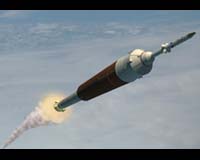 telescopes 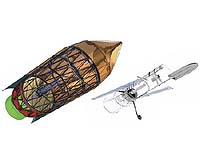 spacetravel 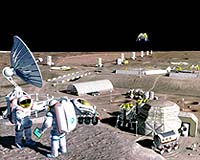 |
| Previous Issues | Aug 02 | Aug 01 | Jul 31 | Jul 30 | Jul 27 |
| The contents herein, unless otherwise known to be public domain, are Copyright 1995-2007 - SpaceDaily. AFP and UPI Wire Stories are copyright Agence France-Presse and United Press International. ESA Portal Reports are copyright European Space Agency. All NASA sourced material is public domain. Additional copyrights may apply in whole or part to other bona fide parties. Advertising does not imply endorsement, agreement or approval of any opinions, statements or information provided by SpaceDaily on any web page published or hosted by SpaceDaily. Privacy statement |